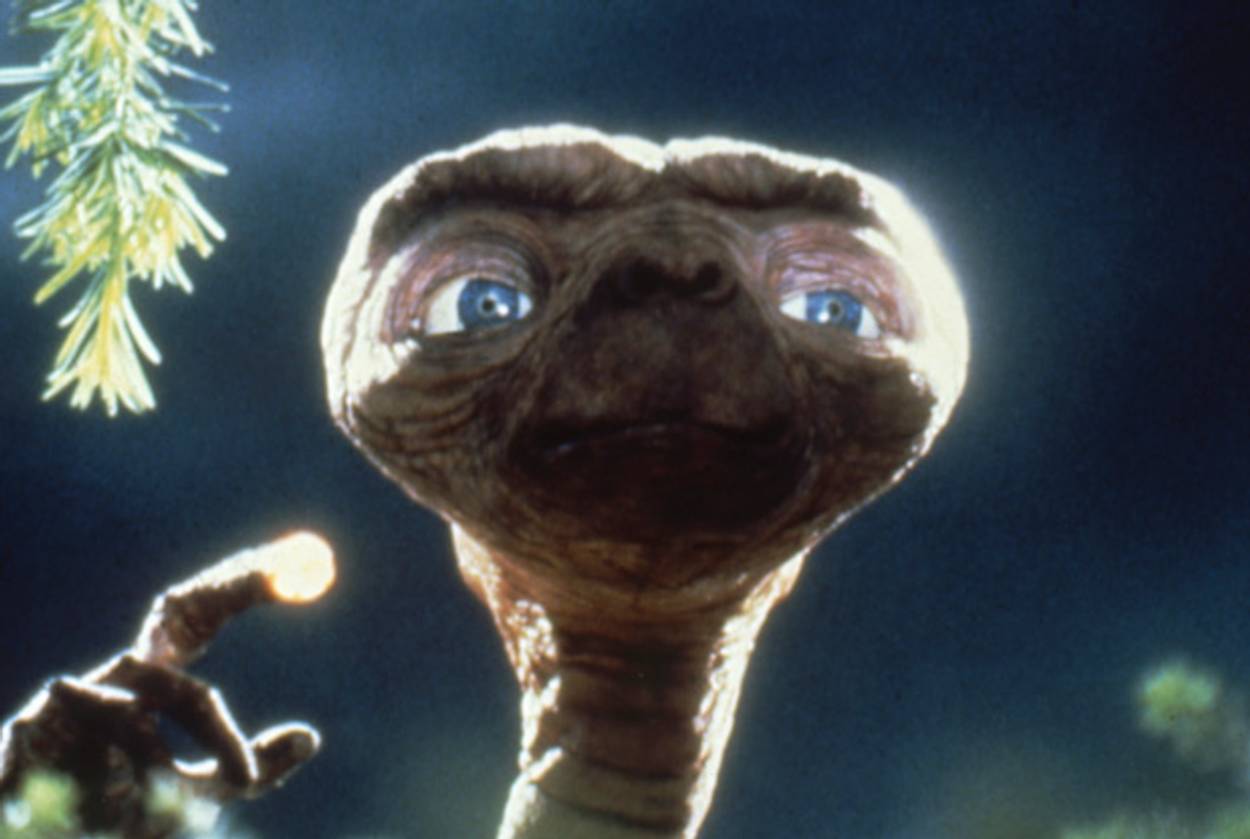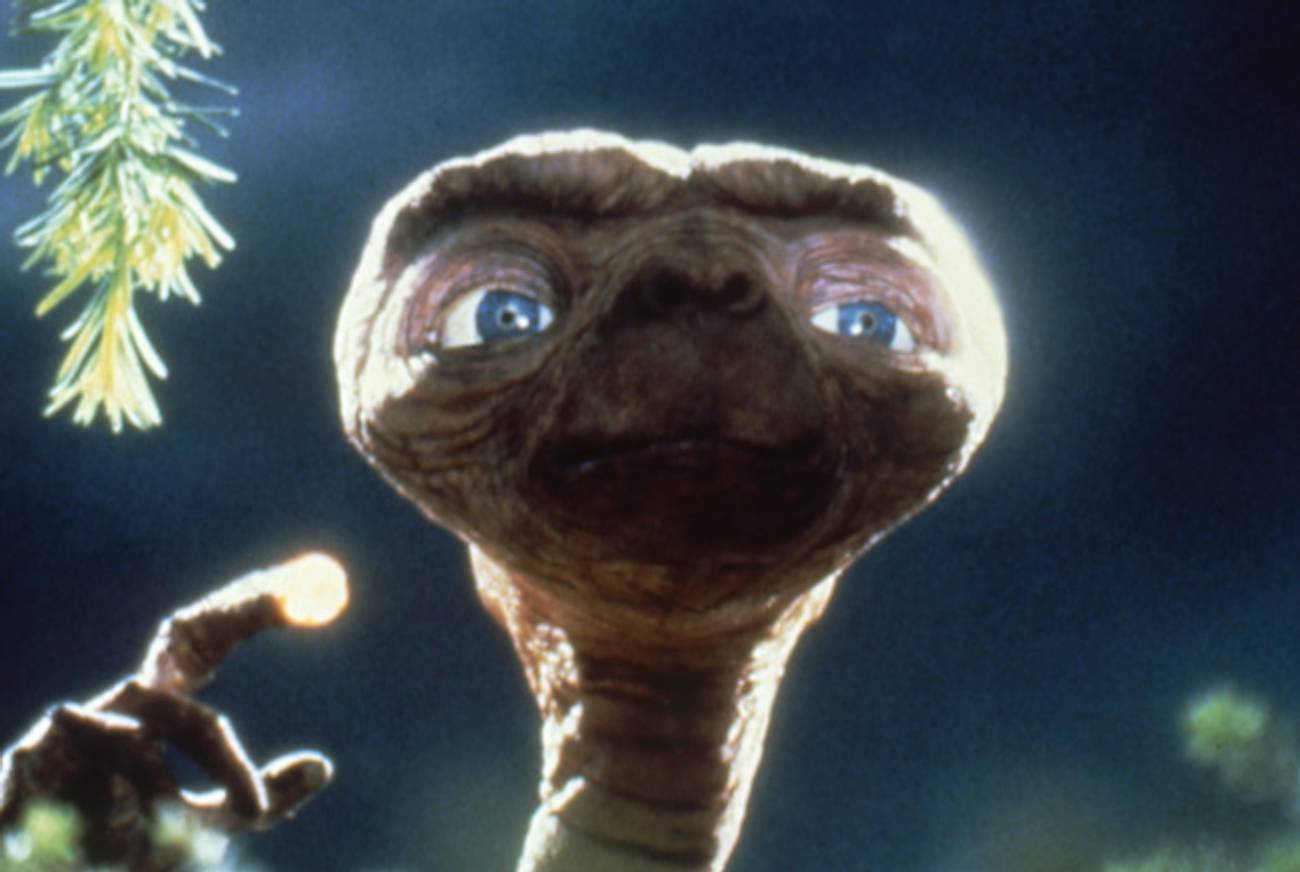No. 1: E.T.: The Extra-Terrestrial
The greatest Jewish movie ever made




1982, dir. Steven Spielberg. What kind of a movie is E.T.? It’s a children’s fantasy and an adult melodrama. It’s an action-adventure, a love story, a buddy movie, a family drama, and a screwball, complete with madcap cross-dressing scene. It’s the quintessential ’80s popcorn movie, but it takes in the moods, and the motifs, of other cinematic golden ages. There’s a hint of 1970s paranoid political thrillers—those sinister government agents hunting down the extra-terrestrial, with their roaring off-road-vehicles and flashlights and surveillance equipment. There is midcentury Hollywood Americana, Frank Capra’s idyllic middle-American small towns relocated to suburban California, where kids tool around subdivisions on BMX bikes. E.T. holds echoes of Peter Pan, and The Wizard of Oz, and Spielberg’s own Close Encounters of the Third Kind. It’s a movie that includes some of most shameless product placement you’ll ever see—E.T. gobbling up Reese’s Pieces—yet it feels as timeless, as transcendent, as a fairytale.
And it is the greatest Jewish movie ever made.
Many viewers have detected religious overtones in E.T.—Christian religious overtones. The critic Andrew Nigels likened E.T. to Jesus, citing his third act death-and-rebirth, and few could look at the original E.T. movie poster and miss the allusion to Michelangelo’s “The Creation of Adam.” But squint closer and the film’s Jewishness comes into focus. Spielberg himself called E.T. “a minority story.” The saga of the spaceman marooned on planet Earth follows the classic, folkloric outline of the foundling myth. But there is another, archetypally Jewish story here, a minority story, indeed: an immigrant’s tale. E.T. is the ultimate greenhorn—an anxious, bewildered creature, adrift in a strange land. Like generations of newcomers before him, E.T. learns to speak a few halting, oddly accented English words, including the phrase that migrated from Melissa Mathison’s script straight into pop-culture lore. Your great-great-grandparents recited Psalm 137 and sang “Mein Shtetle Belz.” This alien says “E.T. phone home.”
But there is more here than Jewish exilic longing. There is Jewish existential dread. In the opening sequence, E.T. is collecting botanical samples in a redwood grove when Jeeps lurch into view and black-silhouetted agents sweep through the forest. For the rest of the movie, E.T. is a refugee, hiding out in a bedroom closet, stalked by a ruthless enemy. The film’s most harrowing scenes find the alien stretched on a slab by military scientists. All that stands between E.T. and doom is Elliott, the brave little boy who spirits the creature to safety in his bicycle’s handlebar basket. (And you thought Schindler’s List was Spielberg’s first Righteous Gentile movie.)
E.T. was a megahit, shattering the box-office record held by Star Wars to become the highest-grossing film in history, a record it held for a full decade. Spielberg is often described as the creator of the modern blockbuster, the man who unleashed the assaultive, special effects-packed enormo-movie on the world. But nearly 30 years after E.T. arrived in theaters, what impresses is how small the movie feels. The heart of the film is an intimate little family drama, three kids and recently divorced mother, muddling through their middle-class lives. E.T. begins and ends with a spaceship, but it is no Star Wars. It is messily, gloriously terrestrial.
Not that it stays earthbound. Spielberg is a technically masterful filmmaker, and in E.T. he’s as virtuosic as he’s ever been, summoning his powers as pacer of scenes and composer of shots to make pure movie magic. Spielberg is shamelessly sentimental, as his critics have often pointed out, but in E.T. he is sentimental in the right proportions—and about the right things: love, friendship, tolerance, the siren-call of home and family, the difficult passage from innocence to experience. He’s wise enough to know that, occasionally, unguarded enchantment is what’s required—the strains of a full symphony orchestra swelling to a crescendo as a boy peddles his bicycle up, up, right off the ground, toward an improbably bright and gigantic full moon. It’s a very Jewish lesson, which Spielberg has taught us again and again, never more powerfully than in E.T.: Sometimes, art and schmaltz can be one and the same.
Jody Rosen is a contributing writer for the New York Times Magazine.